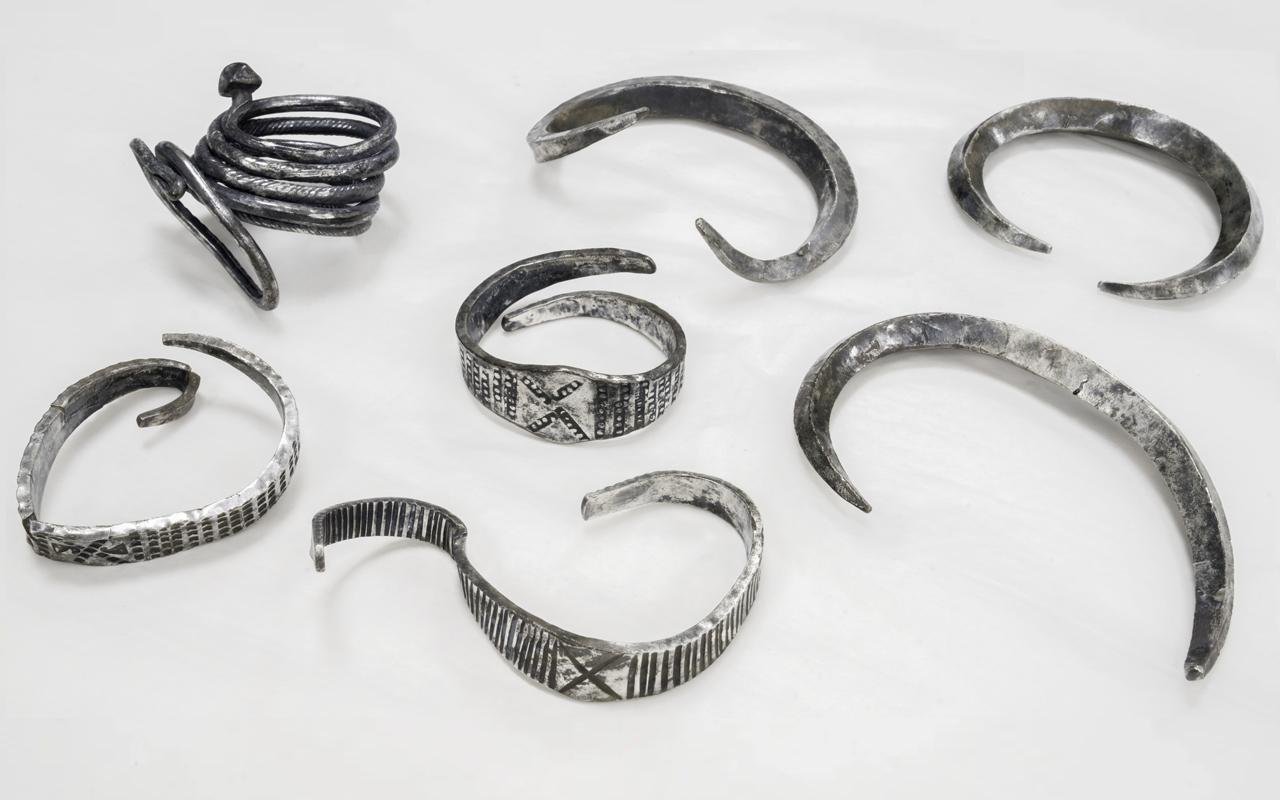A 22-year-old archaeology student from Aarhus University, Gustav Bruunsgaard, unearthed a significant Viking Age silver hoard in a field near Elsted, Denmark, earlier this year.
 7 silver arm rings dating to the Viking era, unearthed by college student in Denmark. Credit: Moesgaard Museum
7 silver arm rings dating to the Viking era, unearthed by college student in Denmark. Credit: Moesgaard Museum
This discovery, consisting of seven intricately designed silver arm rings, was made during a metal detector survey in a field where traces of a Viking Age settlement had previously been identified. Bruunsgaard initially uncovered a single silver bangle, which led him to return to the site, ultimately unearthing six more similar artifacts. The hoard has been dated to around 800 CE, placing it within the early Viking Age, a period known for its extensive trade networks and cultural exchanges across Europe and Asia.
The total weight of the silver hoard exceeds half a kilogram (approximately 1.1 pounds). The bracelets are believed to have been used as “hacksilver,” a form of currency common during this time. Hacksilver was typically adapted to a standardized weight system and used not only as a means of payment but also to demonstrate the wealth and social standing of its owner.
Of the seven arm rings, the majority were likely produced by artisans in Southern Scandinavia, with three of the band-shaped bangles featuring an “X” rune symbol, which is thought to represent generosity or gifting. Such symbolic stamping is rare, though examples have been found in other parts of Scandinavia and the British Isles.
Notably, one coiled arm ring in the collection is of a style that originated from Viking settlements in what are now Russia and Ukraine. Kasper H. Andersen, a historian at Moesgaard Museum stated: “The Elsted farm treasure is a fantastically interesting find from the Viking Age, which connects Aarhus with Russia and Ukraine in the east and the British Isles in the west. In this way, the find emphasizes how Aarhus was a central hub in the Viking world, which went all the way from the North Atlantic to Asia.”
Aarhus, where the hoard was discovered, was a burgeoning harbor settlement at the time, strategically located at the mouth of the Aarhus River. Its position on key sea routes made it an important trading center, facilitating the exchange of goods, culture, and ideas across vast distances.
This discovery is particularly significant as it adds to the understanding of the Viking Age as a period of global connectivity, where trade routes extended from the Islamic world to the far reaches of Afro-Eurasia. Previous studies, including those of similar artifacts like a silver ring found in Sweden, have suggested close contact between Scandinavians and the Islamic world during the 9th century.
Currently, the silver arm rings are on display at the Moesgaard Museum, where they have been described as a “spectacular silver treasure.” Following the temporary exhibition, the artifacts will be transferred to the National Museum of Denmark for permanent display.
As per Danish law, archaeological finds of historical significance, particularly those made of precious metals, are considered state property. The finder, in this case, Bruunsgaard, will be compensated based on the value, rarity, and historical significance of the hoard.
Moesgaard Museum





